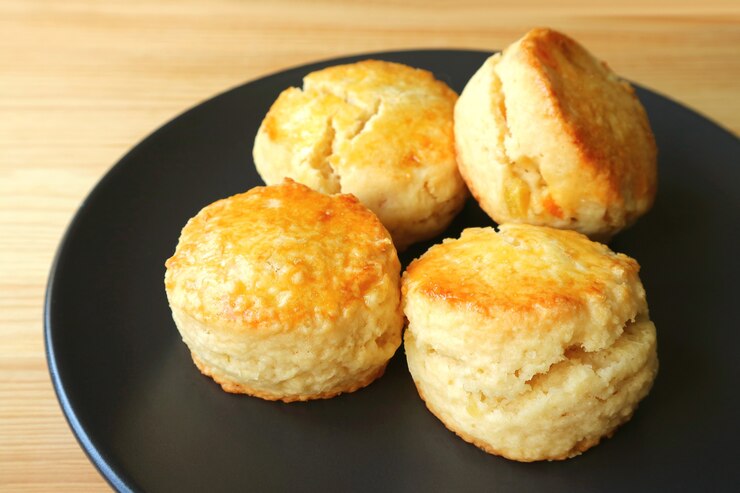Plain scones, with their delicate crumb, buttery flavor, and comforting aroma, are a quintessential treat that pairs perfectly with tea or coffee. Baking the best homemade plain scones is a delightful endeavor that will impress your family and friends. If you’re eager to create scones that are light, fluffy, and irresistible, we’ve gathered expert tips and techniques to help you achieve scone perfection. Get ready to embark on a baking adventure with these tried-and-true tips.
- Start with Cold Ingredients:
One of the secrets to light and flaky scones is using cold ingredients. Keep the butter, milk, and eggs chilled until ready to use. Cold butter creates pockets of steam when it melts during baking, resulting in a tender and airy texture. The cold ingredients also help prevent the scones from spreading too much. - Use a Light Touch:
When making the scone dough, handle it gently and avoid overmixing. Overworking the dough can develop gluten, resulting in tough and dense scones. Mix the dry ingredients together, cut in the cold butter using a pastry cutter or your fingertips until it resembles coarse crumbs, and then add the liquid ingredients. Mix just until the dough comes together. - Don’t Overroll the Dough:
After the dough comes together, turn it out onto a lightly floured surface and pat it gently into a rectangle or circle. Be careful not to overroll the dough, as this can also lead to tough scones. Aim for a thickness of about 1 inch (2.5 cm) to ensure even baking and a tender texture. - Keep the Oven Hot:
Preheat your oven to a high temperature, typically around 425°F (220°C). The high heat helps create a beautiful rise and a golden crust. Make sure your oven is fully preheated before placing the scones inside to ensure proper baking. - Use a Floured Cutter:
When cutting out the scones, dip a round biscuit cutter into flour before pressing it into the dough. This prevents the dough from sticking to the cutter, allowing you to cleanly cut out the scones. Avoid twisting the cutter when cutting, as it can seal the edges and hinder the rise. Instead, press straight down and lift the cutter directly up. - Handle the Dough Scraps with Care:
After cutting out the initial batch of scones, you may have some dough scraps left. Instead of rerolling the scraps, gently gather them together and pat them into a shape. Rerolled dough may produce slightly tougher scones, so it’s best to handle the scraps with care or simply discard them. - Brush with Egg Wash:
For a lovely golden color and a slightly glossy finish, brush the tops of the scones with an egg wash before baking. Beat an egg with a little milk or water, and lightly brush the mixture over the scones using a pastry brush. This step adds an appealing visual appeal to the finished scones. - Serve Warm and Fresh:
Plain scones are best enjoyed warm and fresh out of the oven. Allow them to cool for a few minutes on a wire rack, but serve them while they are still slightly warm. Accompany them with clotted cream, butter, and your favorite jam for a classic scone experience.
With these expert tips and techniques, you’re well on your way to baking the best homemade plain scones. From using cold ingredients to handling the dough with a light touch, each step contributes to scones that are tender, flaky, and utterly delicious. So, gather your ingredients, preheat that oven, and indulge in the simple pleasure of homemade plain scones that will transport you to a cozy teatime experience.








